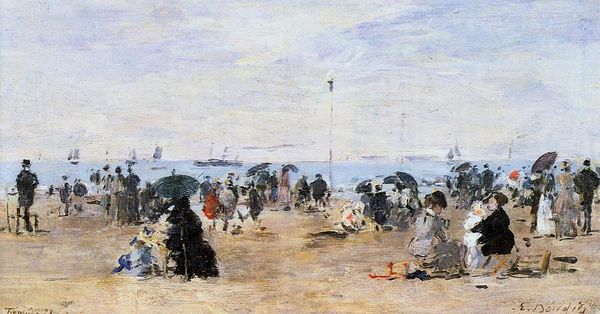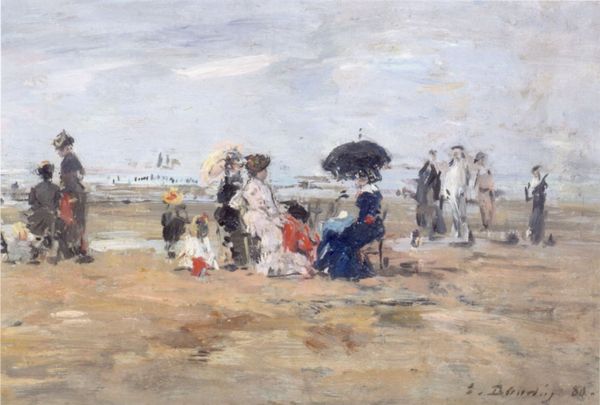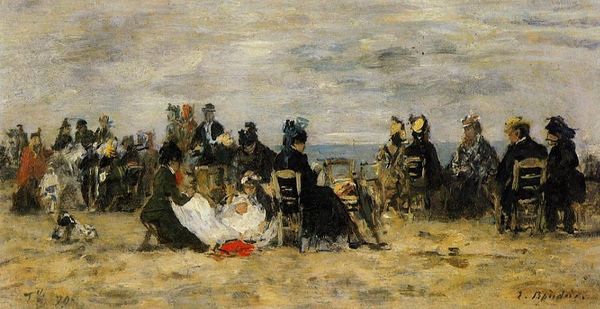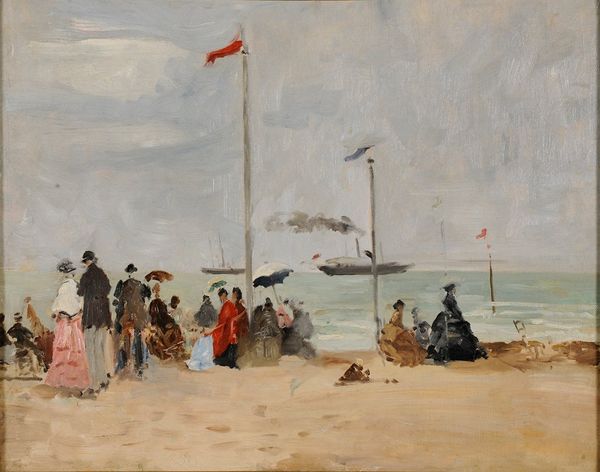
Dimensions: 65 x 81 cm
Copyright: Public domain US
Editor: Here we have Raoul Dufy’s "The Beach of Sainte-Adresse," painted in 1904. The scene is vibrant, but the hazy atmosphere creates a sense of distance, almost like viewing a memory. There is an elevated walkway separating the canvas. What draws your eye, and how would you interpret the piece? Curator: Immediately, the structural integrity arrests my attention. Observe how Dufy uses color not descriptively, but rather to construct a spatial relationship. The chromatic scale dances between the earthly yellows and the cerulean blues. Does this distribution create a sense of balance, or tension? Editor: I hadn’t considered tension! I thought the similar saturation created balance, with the walkway in the middle adding stability, creating the top and bottom halves. Curator: Indeed. Now, consider the materiality. Notice the short, broken brushstrokes. Dufy isn't trying to replicate the scene, but presenting the sensation of it, through pigment. Editor: So, he’s prioritizing the artistic elements and their relationships over a literal depiction? I see how that impacts the feeling it gives off. Curator: Precisely. And within that feeling lies the expression. What does this structured interplay of colour and brushstroke convey to you? Editor: It’s more about capturing a fleeting impression of the beach than painting the reality, and about the brushstrokes itself that help give meaning. I appreciate Dufy's focus on artistic language itself. Curator: Indeed, recognizing this allows a greater recognition for abstract form itself and Dufy’s compositional choices, freeing us from narrative expectations.
Comments
No comments
Be the first to comment and join the conversation on the ultimate creative platform.













